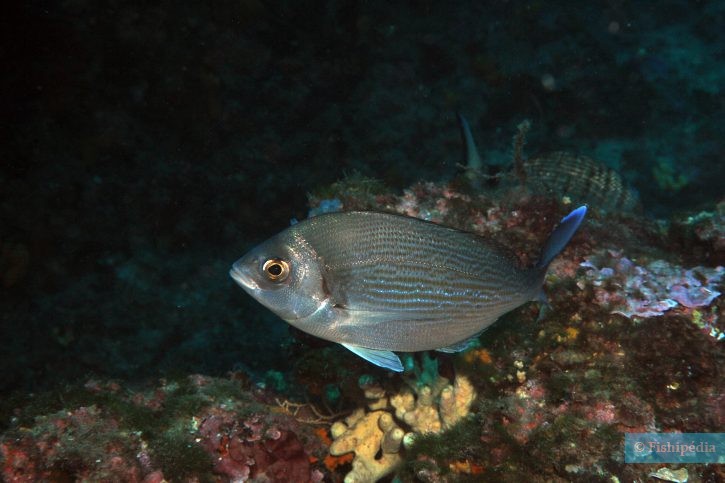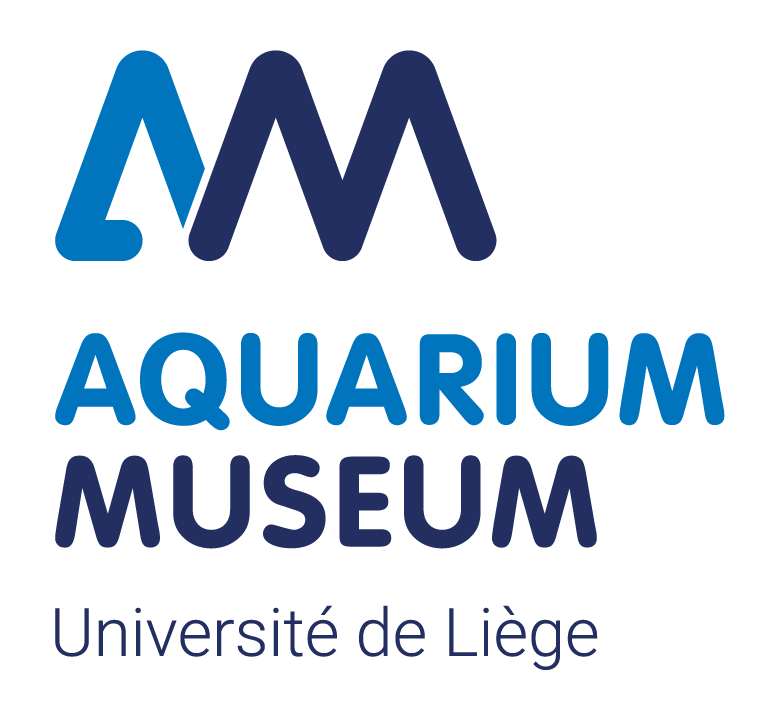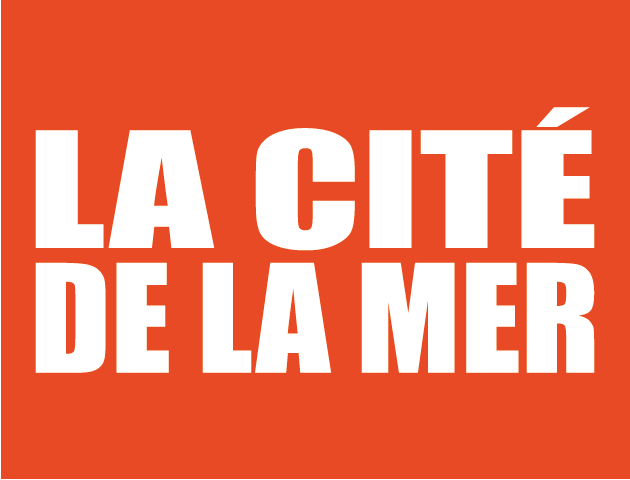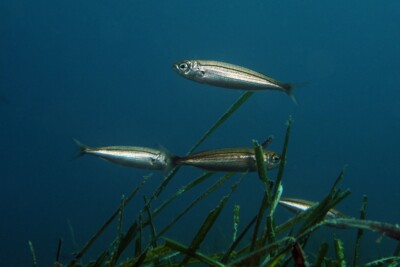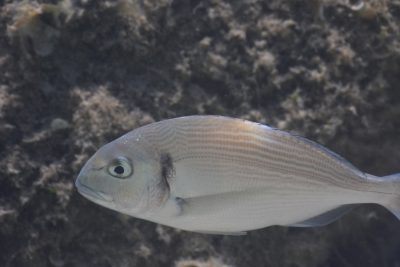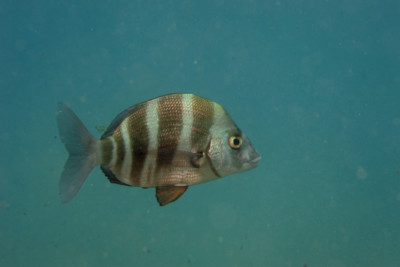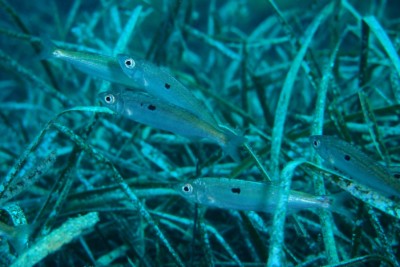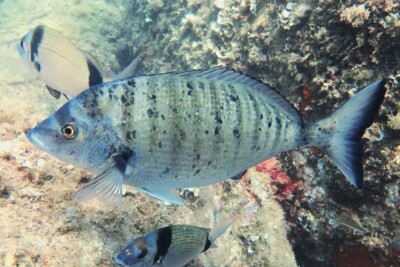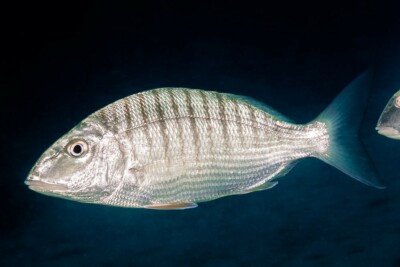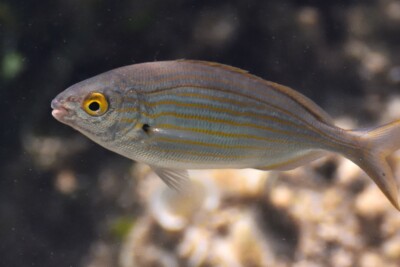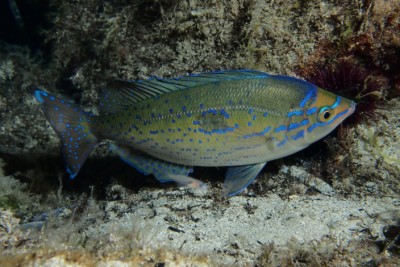black seabream
| Family | Sparidae |
|---|---|
| Genus | Spondyliosoma |
| IUCN category (World) | LC |
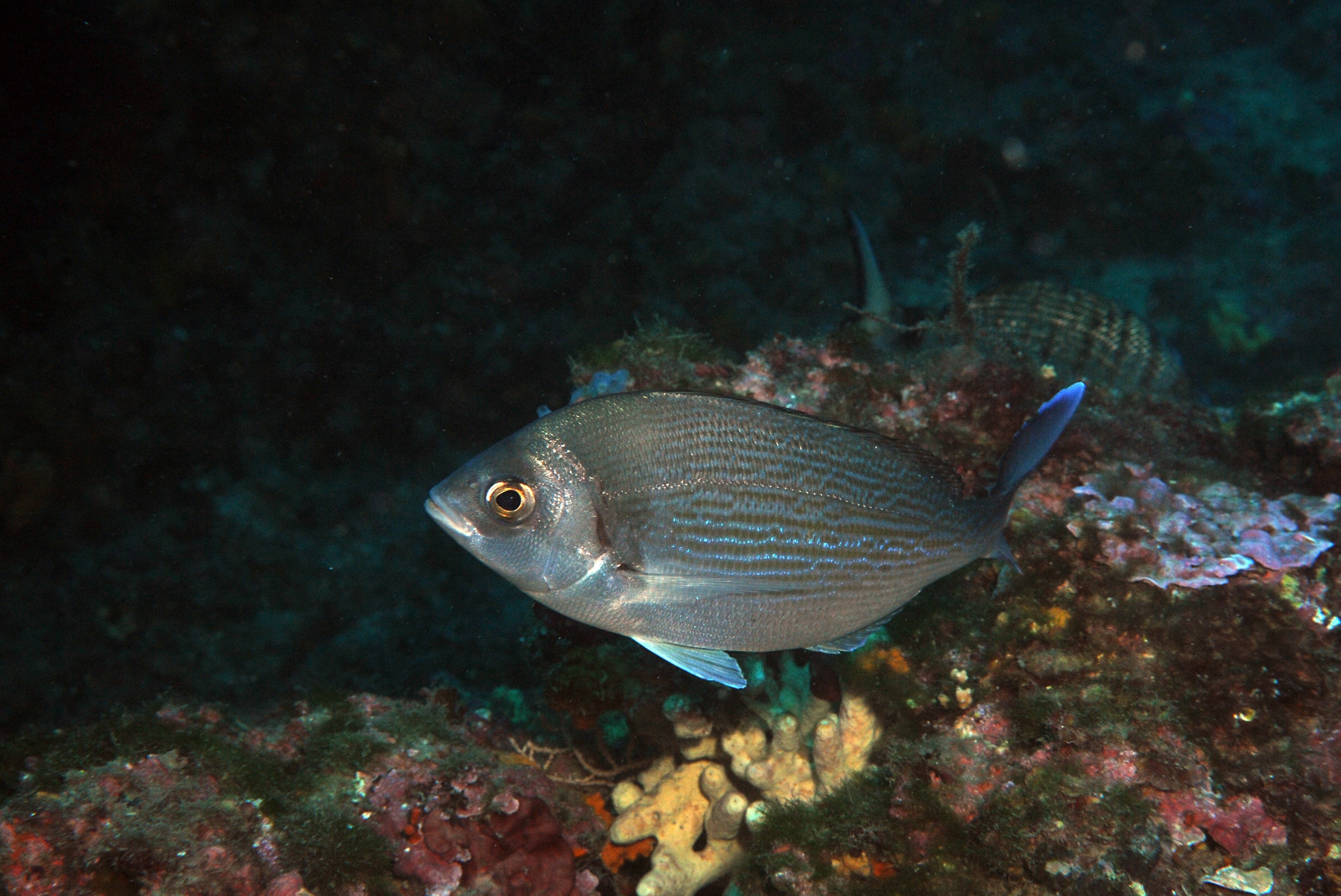

Introduction
Spondyliosoma cantharus, more commonly known as black seabream, is a benthopelagic marine fish. It is found across a large part of the eastern Atlantic Ocean and the Mediterranean Sea.
Who is it?
Morphology
-
Type
-
Average size30 cm
-
Maximum size40 cm
-
ShapeOval
-
Type
-
Average size30 cm
-
Maximum size40 cm
-
ShapeOval
How to recognize This fish ?
The black seabream has an oval body, mostly silver-gray in color. It is laterally compressed and marked with horizontal lines.
It has a single dorsal fin. At night, the body is dark with 5 black vertical bands. Juveniles can be mistaken for Diplodus annularis.
Sexual dimorphism
Males have slightly bluish longitudinal lines, while females have yellow lines. The heads of males are darker and slightly bulging in front of the eyes.
Behaviour & Life cycle
-
dietcarnivorous
-
Sociabilityliving in shoals
-
territorialNo
-
Way of livingdiurnal
The black seabream is an omnivorous fish with a carnivorous tendency, feeding mainly on small invertebrates like crustaceans, as well as algae. It can be found alone or in large groups in sandy areas and seagrass beds.
Reproduction
-
Reproductionovipare qui pond en eau libre
-
Hermaphroditeprotogynous
This species is a protogynous hermaphrodite. Each fish is born female and changes to male at 2 to 4 years old when it reaches a size of 20 cm. This transition period can last 7 to 8 years.
The spawning season is from February to April. During this time, males will dig a nest, up to 1 meter in diameter, in the sand. Males will not tolerate any intrusions in their territory. Once the females have laid their eggs (40 to 110,000), the male will guard them until they hatch.
After an incubation period of 9 days, the juveniles will remain in the nest for a few weeks before joining the pelagic plankton.
Harmless species
This species does not represent any particular threats to humans when encountered in its natural environment.
Origin and distribution
Geographic distribution & Conservation
Stock status and sustainable fishing with Ethic Ocean
Sparids have long been targeted in fisheries, mainly with pelagic trawling. Nowadays, they are often caught in association with other species in mixed fisheries. They are not subject to management plans. However, artisanal fisheries are regulated within the Mediterranean Prud'homies... Learn more
Conservation status of populations (IUCN)
What is its habitat?
Natural environment characteristics
-
Depth1 - 300 m
-
EnvironmentActive pelagic
-
FlowMedium and Slow
Biotope presentation
The black seabream is a benthic fish, found in rocky bottoms with algae or sandy bottoms. Although shy, it is regularly seen at shallow depths.
It is more commonly found at 30m depths on rocky bottoms or wrecks, but sightings have been reported up to 300m deep.
Fishkeeping
Not recommended
We do not recommend keeping this species in an aquarium. It has unpredictable needs which, if not met, generate significant stress, potentially leading to a shorter life expectancy, an interruption of its growth or the development of pathogens.
To go further
Sources & Contributions
Participation & Validation
The Fishipedia team and specialist contributors are committed to providing high-quality content. However, although the information comes from scientific sources or testimonials from specialists, the cards may contain inaccuracies.

Adrien Falzon

Benoit Chartrer
Translation
Translation done with the valuable contribution of our translators, who make this information available to a wider audience. We sincerely thank them for their commitment.
Scientific partners
Tags
Species of the same family
